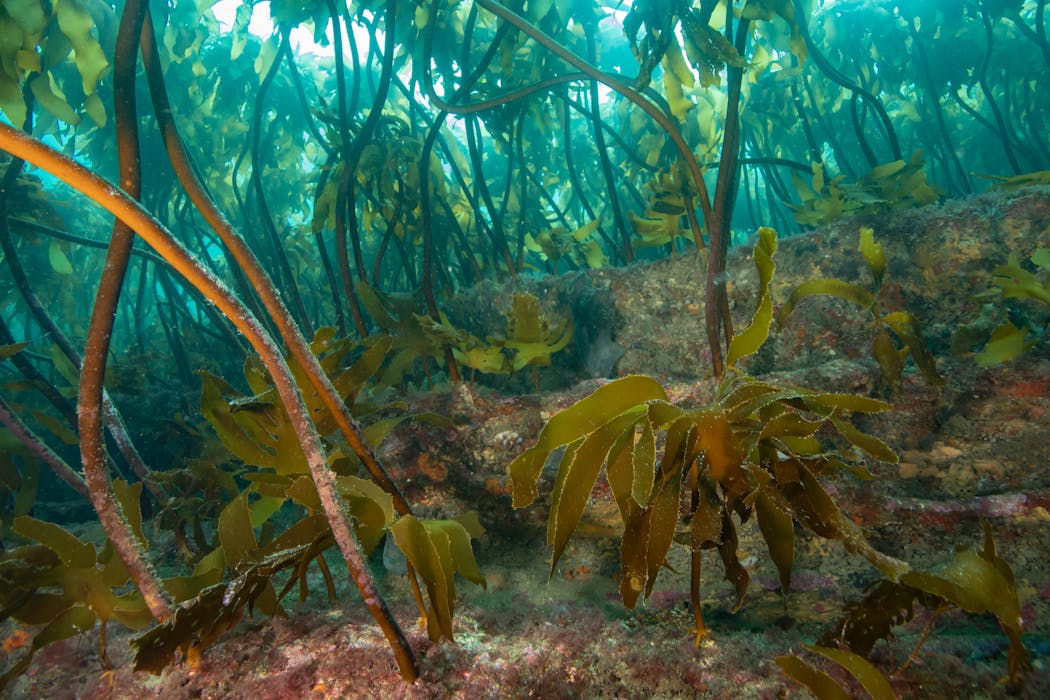
New Zealand’s first legislated marine reserve, established 50 years ago around Te Hāwere-a-Maki/Goat Island north of Auckland, was also among the very first in the world.
During the decades since then, marine scientists have been monitoring changes and tracking significant transformations in the ecosystem – from bare rocky reefs to thriving kelp forests.
Officially known as the Cape Rodney-Okakari Point Marine Reserve, the 556 hectares of protected waters and seabed became New Zealand’s first no-take zone in 1975.
Back then, very little grew on the shallow rocky reefs. It took almost three decades for kelp forests to reestablish following the slow recovery of crayfish and snapper stocks.
These predators play an essential role in keeping marine reef ecosystems healthy because they eat kina (sea urchins) which otherwise increase in numbers and mow down kelp forests.
Once crayfish and snapper were able to mature and grow, the kelp forests returned. Their recovery in turn provided a nursery for juvenile fish and many species came back.
We now see parrotfish, black angelfish, blue maomao, red moki, silver drummers, leatherjackets, octopus and several species of stingrays. Bottlenose dolphins and orca pass through occasionally.
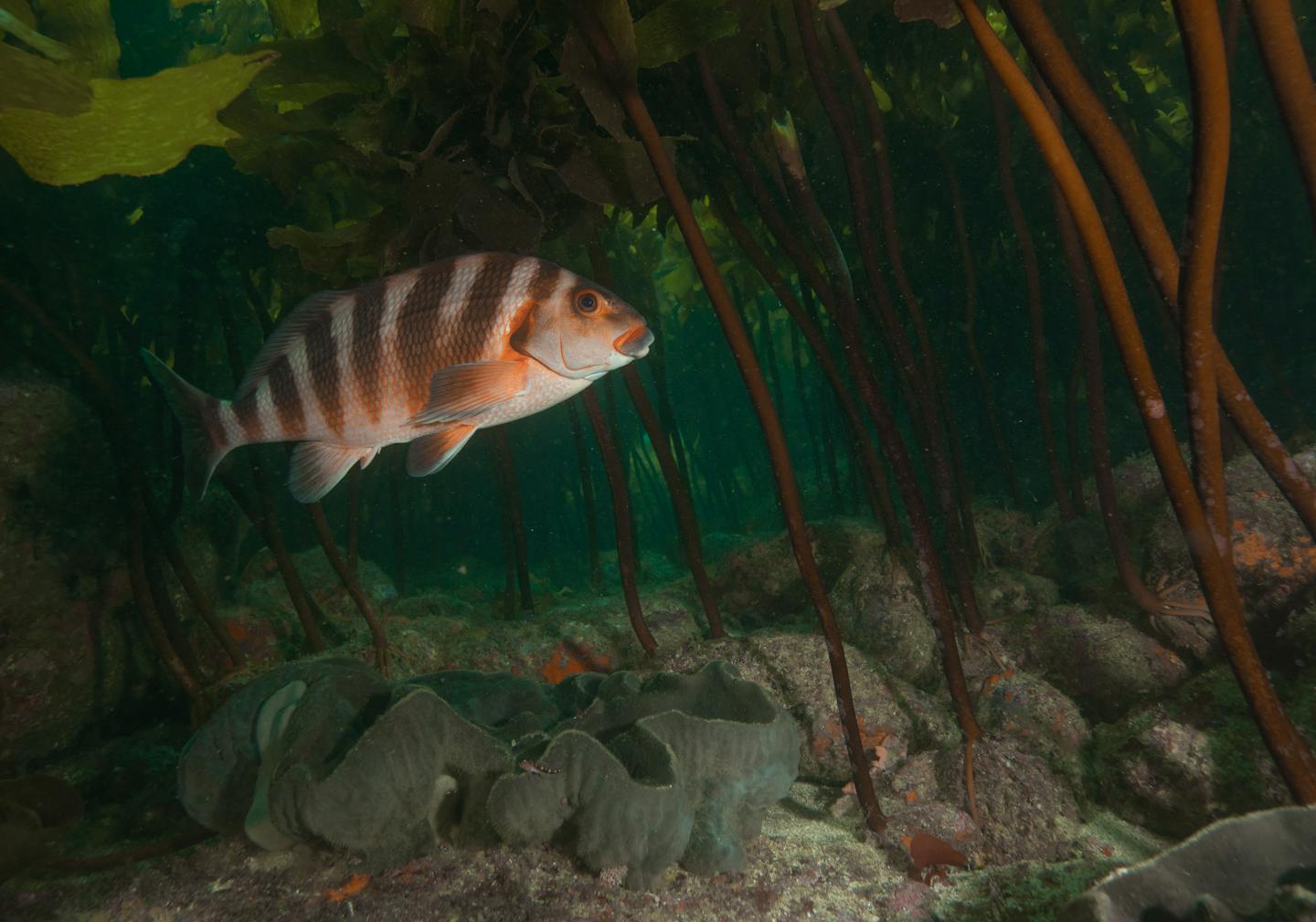
The reserve features a far higher density of fish and other marine life than outside its boundaries. But despite the protection, fish are not as plentiful within the reserve now as they were in the late 1970s.
The ongoing changes within the protected area are helping us to understand the impact of commercial and recreational fishing.
Pressures from fisheries
In 1964, a decade before the marine reserve was established, the Leigh marine laboratory opened on the cliffs above it. Its first director, Bill Ballantine, was concerned that fish stocks were dwindling and marine ecosystems declining in the Hauraki Gulf and became a key force in pushing for the marine reserve to be set up.
But since 1975, Auckland’s population has exploded and recreational and commercial fishing pressures outside the marine reserve have increased markedly.
While crayfish numbers and sizes began to recover when the marine reserve was established, they have dropped again over the past ten years. And fish stocks in the reserve remain far below the levels that would have been present before commercial fishing began to intensify rapidly in the area during the 1950s.
We think this is because the reserve is too small and continues to be affected by the rise in commercial and recreational fishing in the Hauraki Gulf.
Large snapper and crayfish sometimes move out of the reserve and are caught. The outside areas aren’t replenishing the reserve because they are heavily fished.
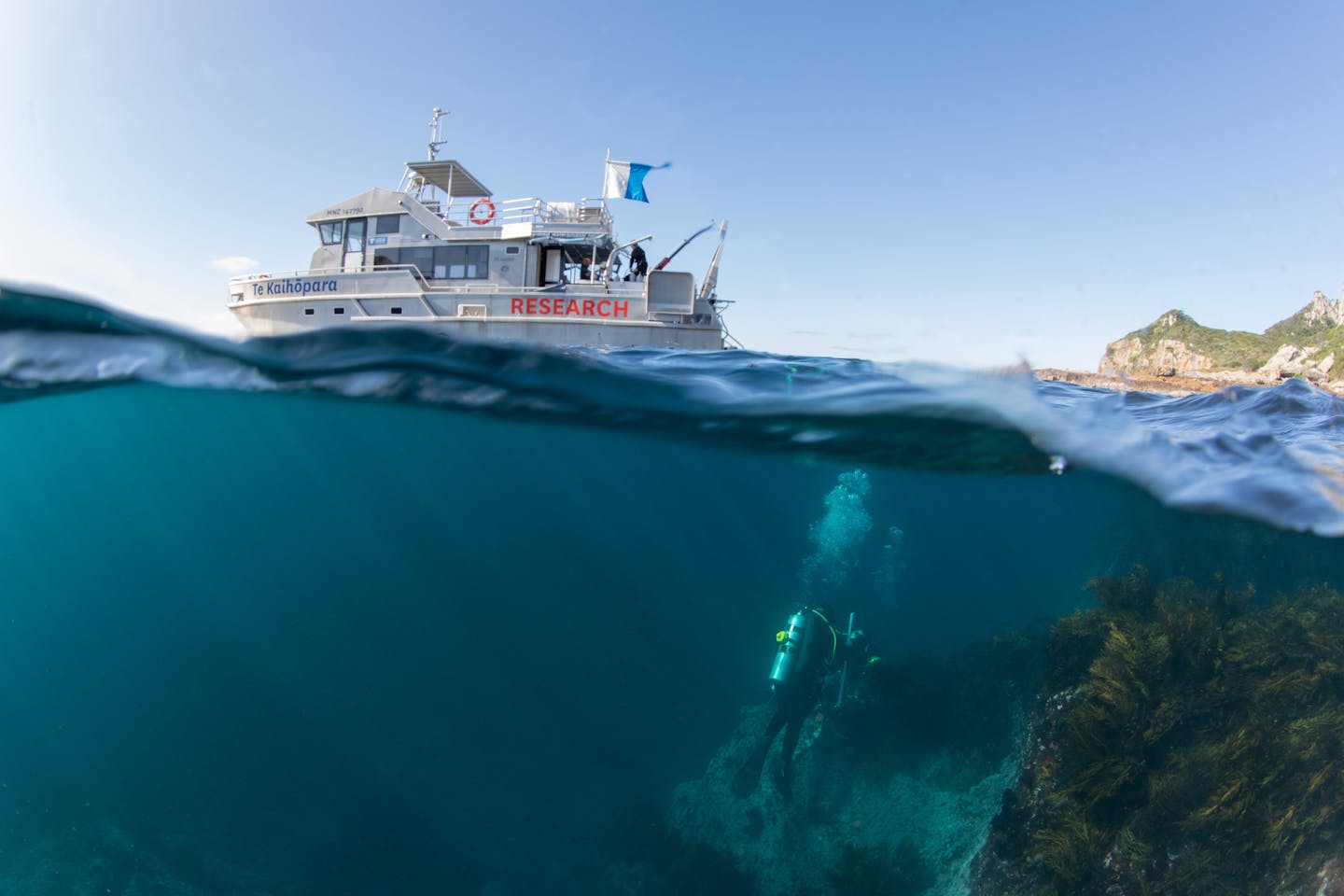
Recent research shows people can speed up kelp restoration in some places by removing kina, but large snapper and crayfish are still needed to maintain the balance long-term.
Another key discovery has been that the reserve’s many mature snapper produce about ten times more juvenile snapper than in unprotected areas of the same size.
About 11% of young snapper found up to 40 kilometres away from the reserve are offspring of snapper that live in the reserve. This “spillover effect” means the reserve is actually enhancing fisheries in the Hauraki Gulf.
Safeguarding the ocean
The Hauraki Gulf Tīkapa Moana Marine Protection Act, which comes into force this month, makes the Goat Island marine reserve about four times larger, extending the offshore boundary from 800 metres to three kilometres and significantly increasing the diversity of habitats protected.
The marine reserve has demonstrated the value of safeguarding patches of sea, but it has also shown that reserves need to be larger to better protect key species such as crayfish and snapper from fishing pressures.
It is also important to protect different types of habitat, in particular the soft-sediment seafloor ecosystems that comprise the bulk of the Hauraki Gulf. These ecosystems are high in biodiversity, support important fisheries, sequester carbon and process nutrients that maintain productivity. But they are vulnerable to seafloor disturbance.
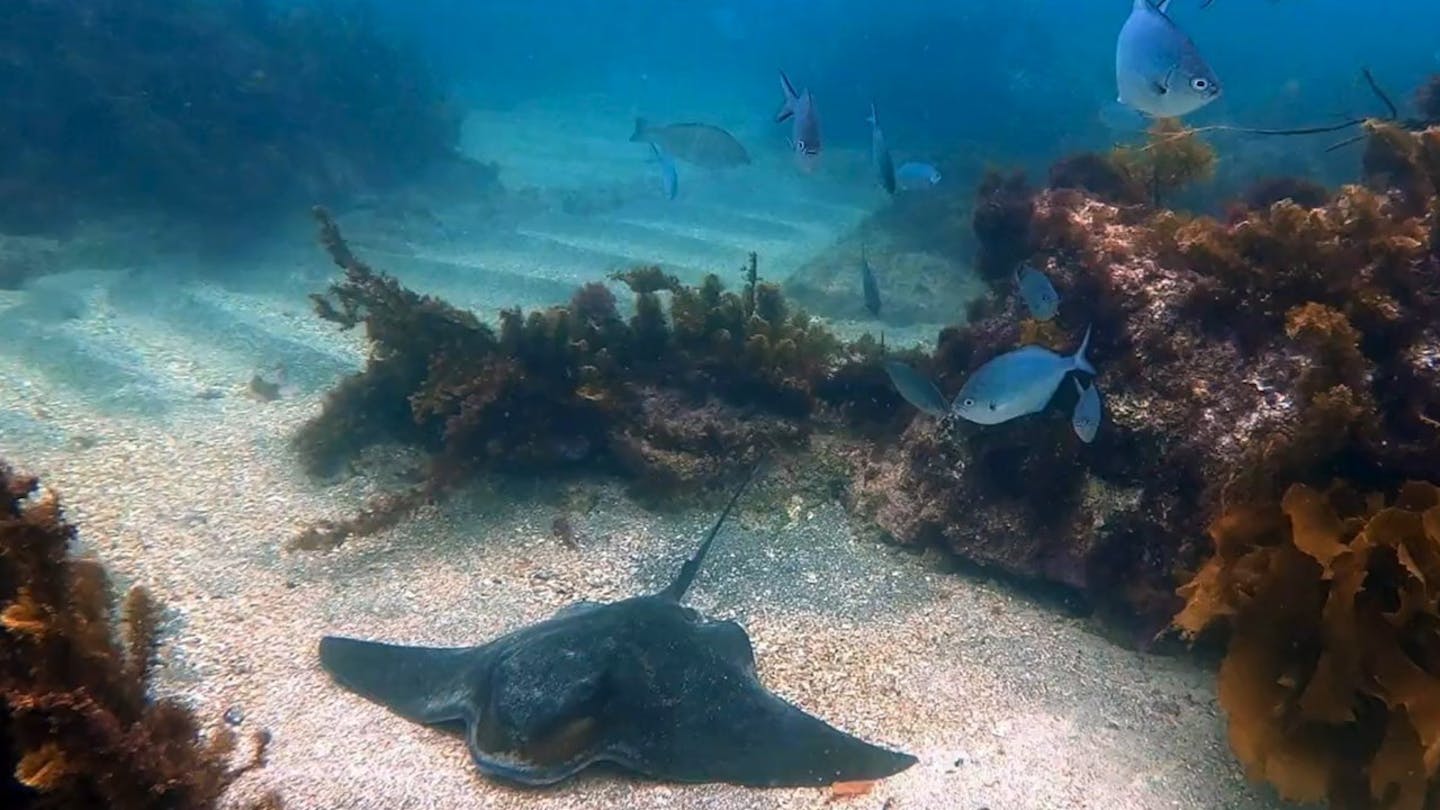
As the impacts of climate change worsen, the historical records and understanding we have drawn from this marine reserve now act as an important baseline.
We know that restoring kelp forests in the reserve and elsewhere has made the area more resilient to climate change, while also contributing to carbon sequestration.
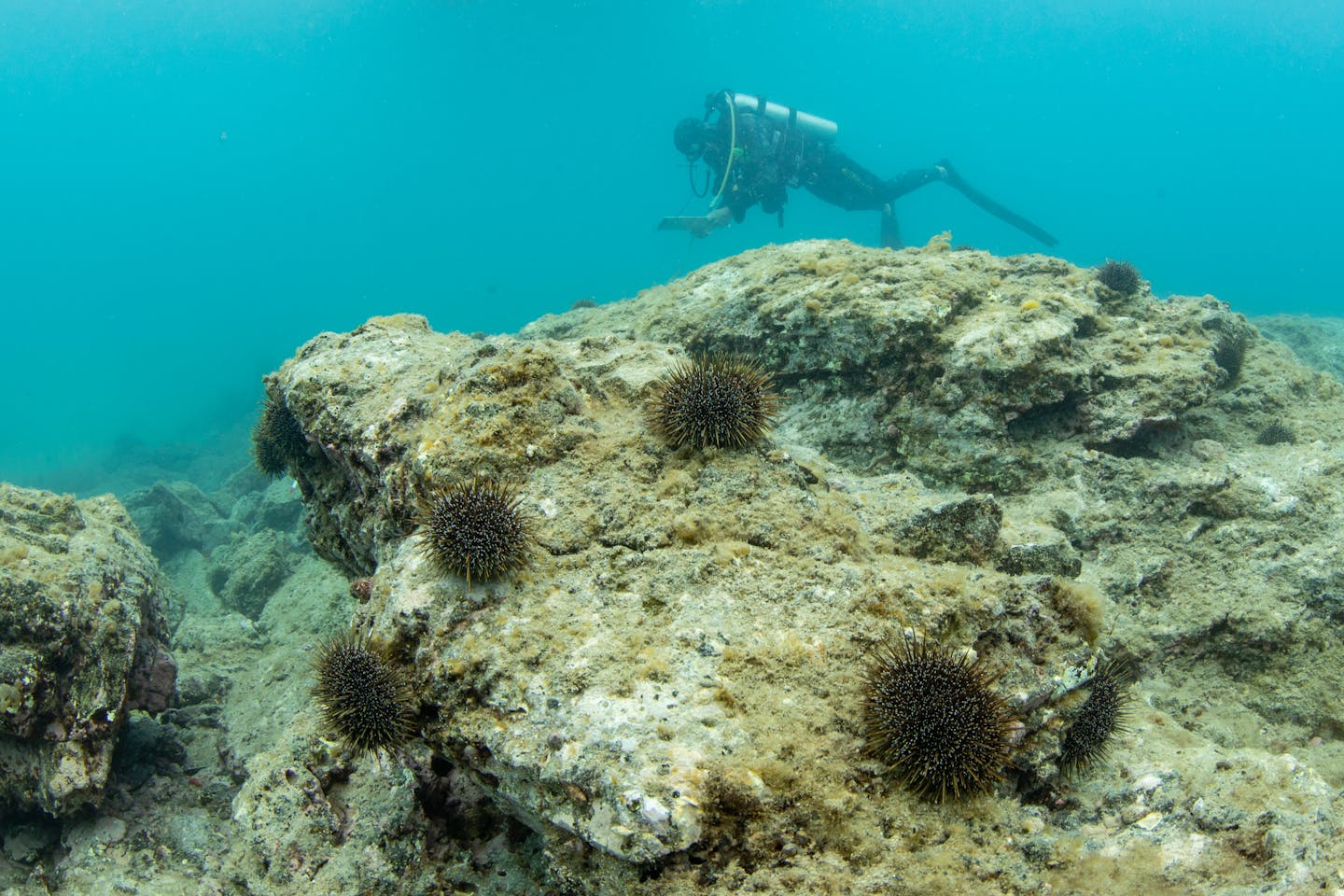
If kelp forests were restored in the Hauraki Gulf Marine Park, the plants would be worth about NZ$7.9 million in carbon credits, if they were valued in the same way as land-based forests.
About 350,000 people visit the reserve annually, mostly to snorkel, dive or take a glass-bottom boat trip to explore the abundance of life beneath the waves. A lot more places could look like this marine reserve if we managed our oceans better.
This article is republished from The Conversation, a nonprofit, independent news organization bringing you facts and trustworthy analysis to help you make sense of our complex world. It was written by: Conrad Pilditch, University of Auckland, Waipapa Taumata Rau and Simon Francis Thrush, University of Auckland, Waipapa Taumata Rau
Read more:
- Protected areas in the Hauraki Gulf nearly triple under a new law – but it comes with a catch
- Marine protected areas safeguard more than ecology – they bring economic benefits to fisheries and tourism
- These extraordinary Australian islands are teeming with life – and we must protect them before it’s too late
Conrad Pilditch receives funding from the Department of Conservation, MBIE, regional councils and PROs. He is affiliated with the Mussel Reef Restoration Trust, Whangateau Catchment Collective and New Zealand Marine Sciences Society.
Simon Francis Thrush receives funding from MBIE, philanthropy and ERC. He is affiliated with the Royal Society of New Zealand and the Whangateau Harbour Care Group.


 The Conversation
The Conversation
 KSL Utah
KSL Utah Wausau Daily Herald
Wausau Daily Herald IFL Science
IFL Science The Daily Sentinel
The Daily Sentinel Albuquerque Journal
Albuquerque Journal NPR
NPR St. Louis Post-Dispatch
St. Louis Post-Dispatch Florida Today
Florida Today The Shaw Local News State
The Shaw Local News State Fortune
Fortune